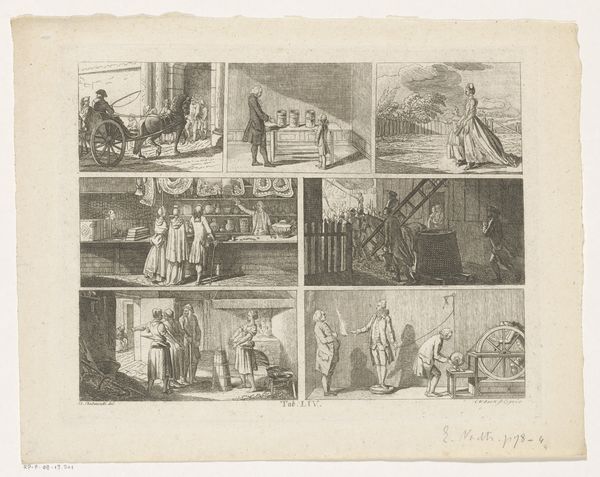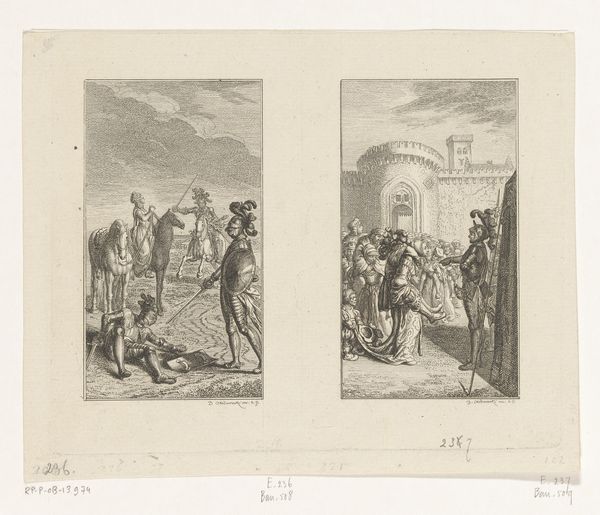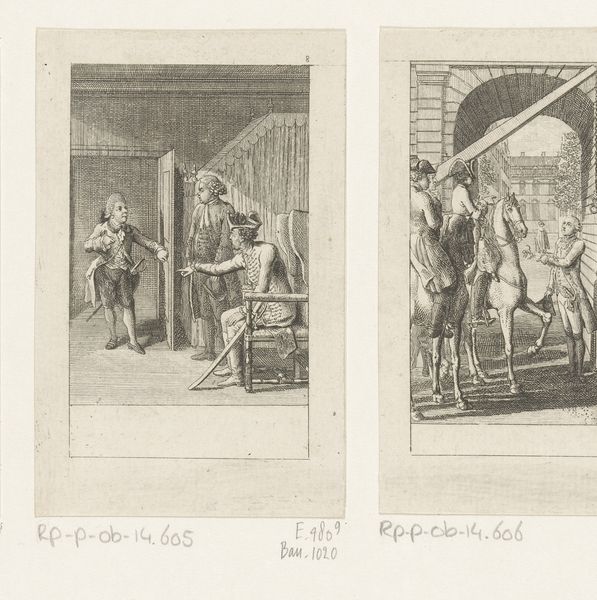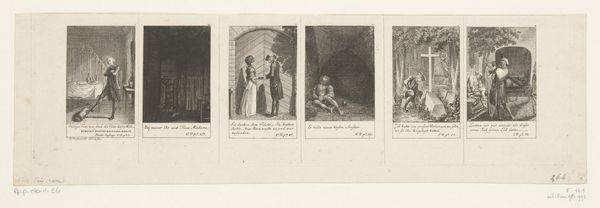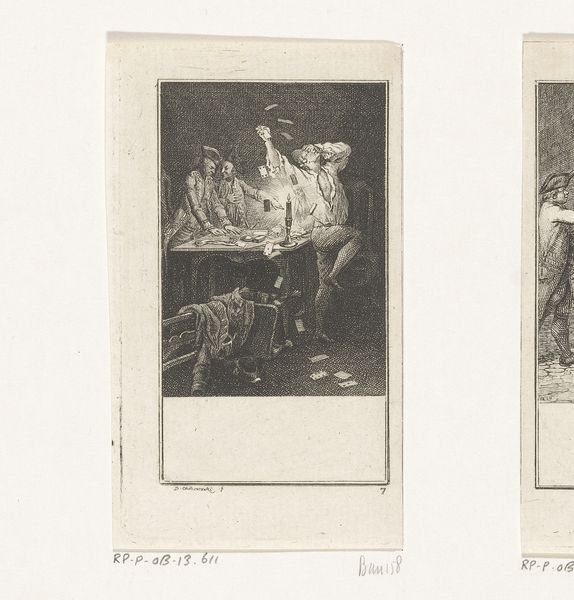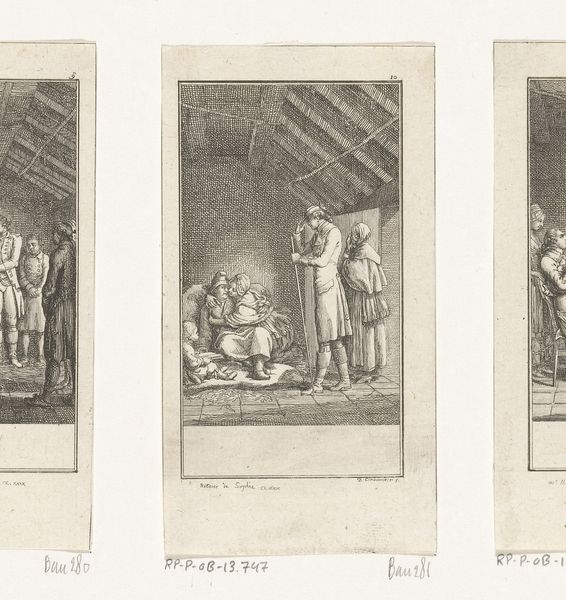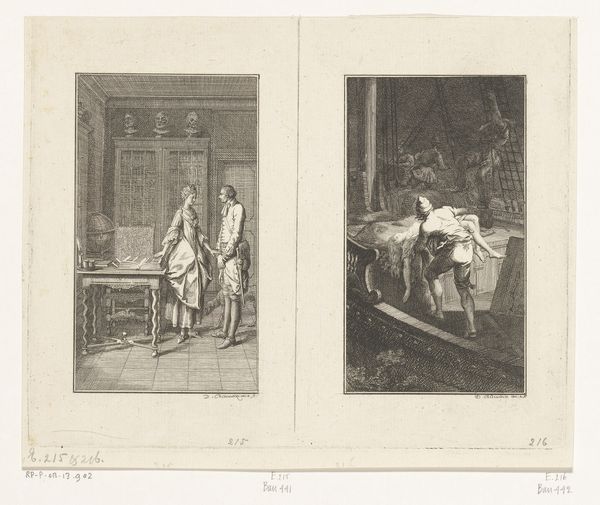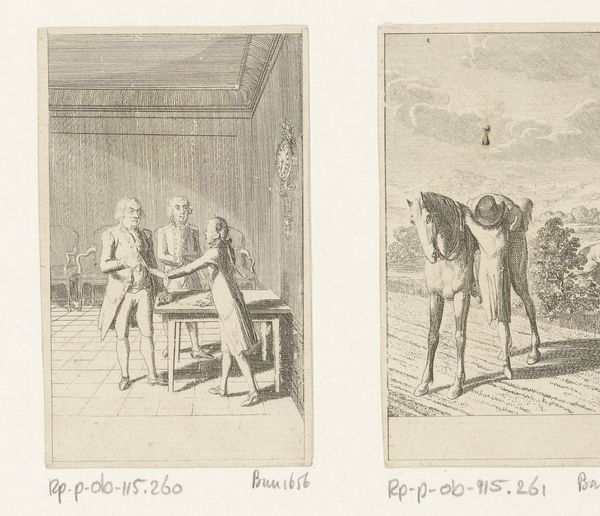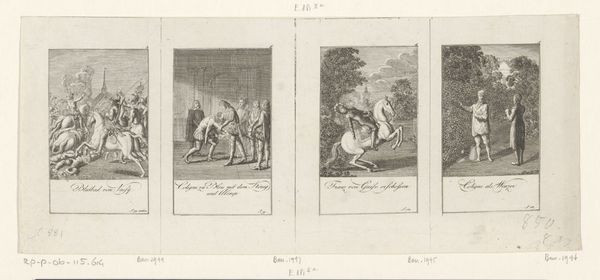
Dimensions: height 110 mm, width 116 mm
Copyright: Rijks Museum: Open Domain
Daniel Nikolaus Chodowiecki made these two fable scenes, sometime around the late 18th century, using etching techniques. Look closely, and you’ll see how the density of fine, closely-hatched lines create shading and volume. This was achieved by repeatedly drawing lines into a prepared ground on a metal plate, and then bathing it in acid. The whole plate would then be inked, and wiped clean, with ink remaining only in the etched lines to transfer the image onto paper through a printing press. This was a relatively efficient means of production, well-suited to the burgeoning print market of the Enlightenment. Unlike painting or sculpture, printmaking allowed for images and ideas to be disseminated widely, contributing to a shared visual culture. Moreover, the graphic quality of line engraving – its dependence on precise, repetitive labor – speaks to the changing social landscape of the time, with its increasing emphasis on industriousness, precision, and the rise of a new kind of middle class. It brings a graphic aesthetic to what would otherwise have been literary subject matter. So, when you look at this print, consider not only the fable it illustrates but also the technologies that made its broad distribution possible.
Comments
No comments
Be the first to comment and join the conversation on the ultimate creative platform.



